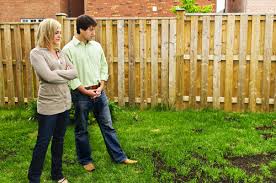How to Reclaim a Patchy Lawn in Time for Summer

Problem Solving
Before you try to fix the problem spot in your yard, you need to determine why it's there and fix it, or you'll have the same problem all over again. Study the area to figure out what's different about it. Is it the area your teenage son insists on backing over on his way out, compacting the soil? Does your neighbor's Fido constantly use that spot for his business? Is it the spot that gets really soggy in the spring?
These examples all affect the condition of the soil by compacting it, making it more acidic than the grass can stand, drowning it with poor drainage or otherwise creating conditions that make it impossible for your grass to grow.
Reseeding or Resodding
Once you've corrected the problem, the solution is easy. The question remaining is whether you will reseed or resod the bare patches.
Reseeding is less expensive but takes longer and is more susceptible to weed competition. The type of seed you use and when you plant it depends on which time of year the bare patches show up. If it's mid-summer, you'll want to overseed with a warm season grass that can survive drought and heat stress more readily and plant in late spring.
During the spring or fall, you'll want to overseed with a cool season grass, preferably in the fall, but if you do plant in early spring, make sure to watch your pre-emergent herbicides. To get the best possible match to your existing lawn, you'll want to stick with the same variety you've already got, unless you're planning on renovating the entire lawn.
Resodding takes less time and is hardier, but is more expensive. As with seeding, pick the same species and plant it after removing the old sod. Overseed with your off-season grass and you'll have a fabulous summer lawn.
If you'd like some expert advice or a free estimate on repairing problem areas you your lawn, please feel free to contact us! Our service-based approach gives your lawn the exact care it needs.